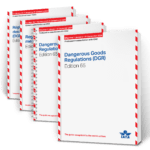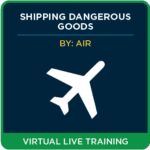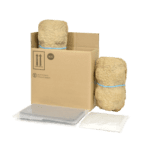IATA DG Checklists
When shipping dangerous goods by air, it is critical to follow strict guidelines and procedures to ensure the safe transportation of these materials. One of the key components of this process is the Dangerous Goods Acceptance Checklist.
The Dangerous Goods Acceptance Checklists are comprehensive documents that cover all aspects of the dangerous goods shipment, including proper packaging, labeling, documentation, and more. These checklists help to verify that the shipment meets all applicable IATA regulations and standards, reducing the risk of accidents or incidents during transport.
What Are Acceptance Checklists?
Paragraph 9.1.3 in IATA requires that operators use a checklist when accepting dangerous goods. The specific content of the checklist is the responsibility of the operator. As a guide, dangerous goods acceptance checklists for radioactive shipments, non-radioactive shipments and a simplified checklist for dry ice have been included at the end of the IATA Regulations. Operators are welcome to use these checklists or create their own if they wish to have additional information they would like to add. The shipper of the dangerous goods does not have to use an acceptance checklist, as that is the responsibility of the operator. However, it may be useful for the dangerous goods shipper to use these documents as a guide to make sure that they are shipping in full compliance of the IATA regulations.
What Information Should be on The Checklists?
- Per 1.3.1 in IATA, the operator must use a checklist to verify the following information below for a shipment of dangerous goods:
- The quantity of dangerous goods stated on the Shipper’s Declaration is within the limits per package on a passenger or cargo aircraft as appropriate.
- The marks on package(s), overpack(s) or freight container(s) accord with the details stated on the accompanying Shipper’s Declaration and are clearly visible.
- Where required, the letter in the packaging specification mark designating the packing group for which the design type has been successfully tested is appropriate for the dangerous goods contained within. This does not apply to overpacks where the specification marks are not visible.
- Proper shipping names, UN numbers, labels and special handling instructions appearing on the interior package(s) are clearly visible or reproduced on the outside of an overpack.
- The labeling of the package(s), overpack(s) or freight container(s) is as required by 10.7.2 for radioactive material and 7.2 for other dangerous goods.
- The outer packaging of a combination packaging or the single packaging is permitted by the applicable packing instruction and when visible is of the type stated on the accompanying Shipper’s Declaration.
- The package or overpack does not contain different dangerous goods which require segregation according to Table 9.3.A.
- The package, overpack, freight container or unit load device is not leaking and there is no indication that its integrity has been compromised.
- The documentation complies with the detailed requirements of Subsection 10.8 for radioactive material and Section 8 for other dangerous goods.
As mentioned above, the checklists can be found towards the end of IATA, but they can also be found here.
Do you have questions about shipping dangerous goods by air? Our team of experts is just a call away for our customers at 855.734.5469 or send us an email, we’re happy to help.
Stay up to date and sign up for our newsletter!
We have all the products, services and training you need to ensure your staff is properly trained and informed.
 IATA Dangerous IATA DangerousGoods Regulations |
 Shipping DG by Air Shipping DG by AirVirtual Live Training |
 4GV Securepacc Complete 4GV Securepacc CompleteShipping Kit |






